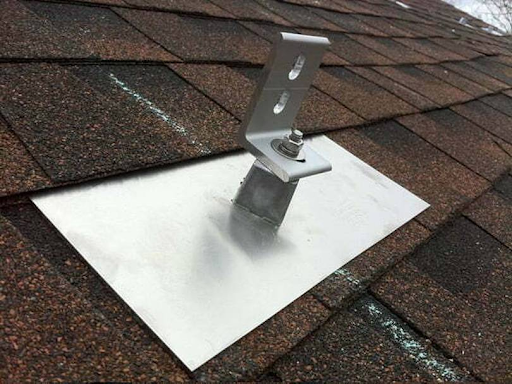High-End Equipment and Warranties
Beacon installs only high-end equipment that is backed by manufacturers’ product warranties and performance guarantees. Roof leaks and equipment servicing are covered by a 25-year roof penetration and installation warranty, so you can rest assured that your home is protected and the solar array is safe and working perfectly.
1. Solar Panels
Monocrystalline solar panels (or mono panels) are made from monocrystalline solar cells. Each cell is a slice of a single crystal of silicon that is grown expressly for the purpose of creating solar panels. The cells have edges to form octagons.
When the solar cells are placed on the solar panel, the octagonal shapes help the solar panels fit a maximum number of solar cells into the array. It’s much like cookies on a baking sheet. Even tightly spaced round cookies always have spaces between them, but octagonal cookies can be placed tightly together with little wasted space.
Distinctive for their black color, monocrystalline solar panels typically have an efficiency range of between 15% to 20%, which is why you need so many to cover your electricity costs.
2. Microinverters
Unleashing the power of your solar panels requires more than just sunlight. Inverters are essential components of every solar panel system. Think of it like this: solar panels capture energy from sunlight, and inverters harness that energy to create electricity compatible with your home.
More specifically, inverters convert the direct current energy (DC) your solar panels generate into alternating current (AC) electricity that your home appliances can use. These unsung heroes of solar panel systems come in all shapes and sizes and contribute to the overall efficiency of your system.
Microinverters operate at the panel level and don’t require power optimizers for rapid shutdown compliance and optimization. If something is wrong with one microinverter, only the panel attached to it will shut down instead of the entire system. Diagnosing and fixing issues with microinverters is often quicker than with central string inverters.
Microinverters can easily grow with your solar panel system over the years. Let’s say your energy demands increase in the future. You can add more panels with microinverters instead of matching the power output of a central inverter with your new system size. Plus, most microinverters are warranted for the same amount of time as the panels they’re attached to (typically 25 years), so you can expect them to last longer.
3. Racking System
You’ll generally only see the shiny new panels when you install a rooftop solar panel system. But right under those panels is racking equipment, which is key to keeping them secure and in place.
The right racking equipment for your system primarily depends on your roof type and safely affixes the solar panels to your roof type. We only use high-quality systems that are meant to last and never have leaks.
3.1 Flashings

A thin, rectangular piece of aluminum sheeting that is inserted underneath shingles on a traditional tile roof. For other roof types, we use specially designed flashings that fit the unique shape of your roofing material.
3.2 Mounts

Solar panel systems are attached to your roof with mounts (or “feet”) and are usually attached to your roof with a bolt through the flashing and into a rafter, securing your whole system. There are many varieties of mounts used in different racking systems. We will need access to your attic or the underside of your roof during an initial site visit to ensure that your rafters are structurally intact and appropriately spaced to accommodate the mounts for your solar panel system.
3.3 Rails

Mounts hold up rails, the component of solar racking that your solar panels sit directly on top of. They are often long aluminum tracks installed vertically or horizontally on your roof plane. Several alternative rail setups exist to standard rails, such as rail-less or shared-rail. An added benefit of rails is that they provide a clear space to run the wiring of your solar panel system, helping to reduce clutter and improve the safety and aesthetics of your installation.
3.4 Clamps

To keep solar panels secured in place on racking, installers use clamps, which link solar modules to the rails below. Installers will often use both mid-clamps and end-clamps on an installation. Mid-clamps sit between solar panels and hold them in place on two sides, while end-clamps sit at the ends of the full system and are typically larger.
3.5 Critter Guards

A solar critter guard is a physical barrier that wraps around your solar array to block uninvited guests such as squirrels and birds. They also prevent excess leaves from getting trapped under your panels and serve to protect them from damage.
4 Breaker Monitoring Sensors
When it comes to getting the most out of your solar panels, managing the solar power you make is key to keeping your electricity bills low. With the sensors we put on your breaker board, you will be able to know when your home generates the most solar energy, identify energy hogs, and adjust when and where you use energy in your home to make the most out of your solar system.
With Beacon’s intuitive mobile app, you will be able to track production and use in real-time, look at short-term and long-term trends and even figure out which appliances might need replacing.


